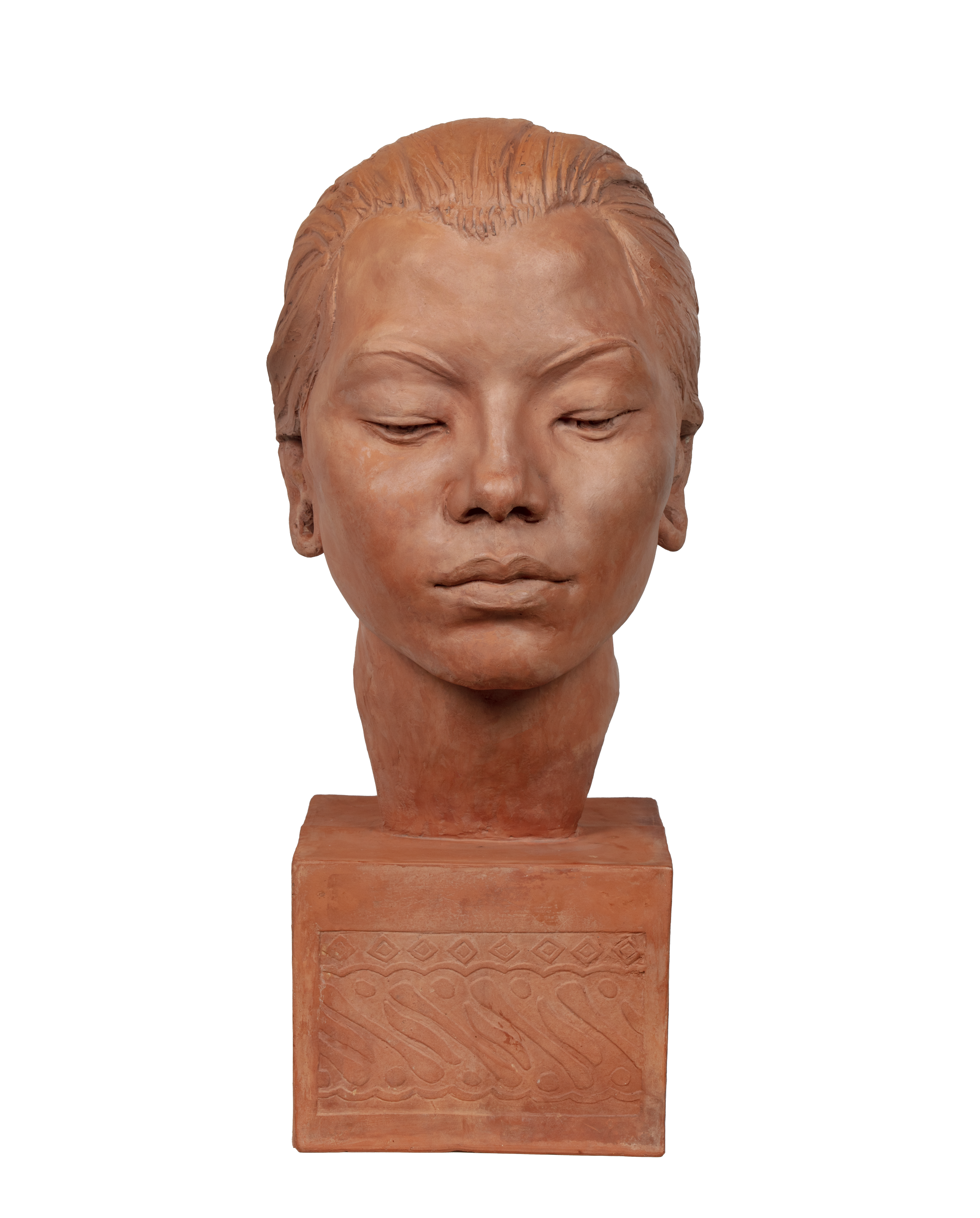
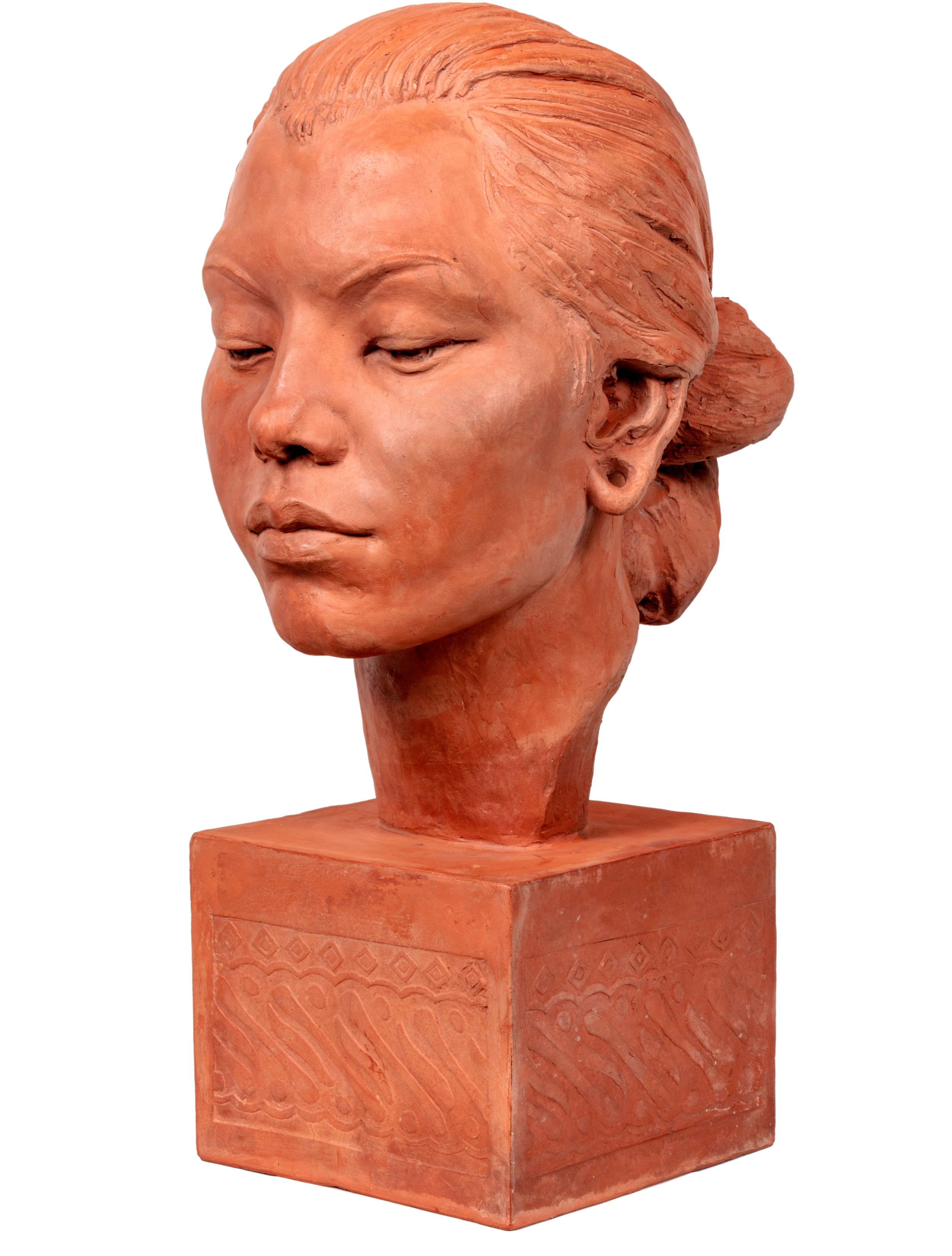
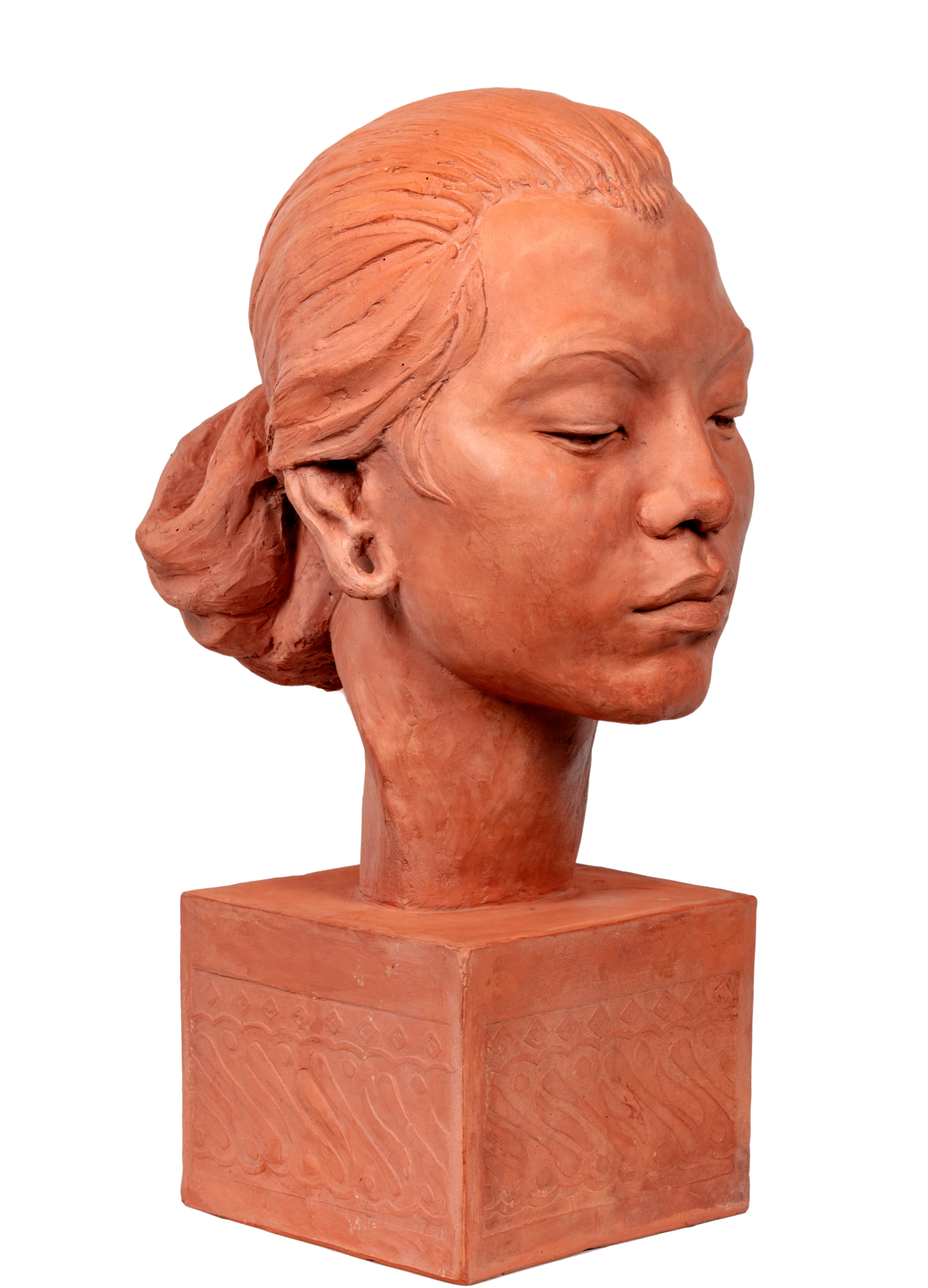
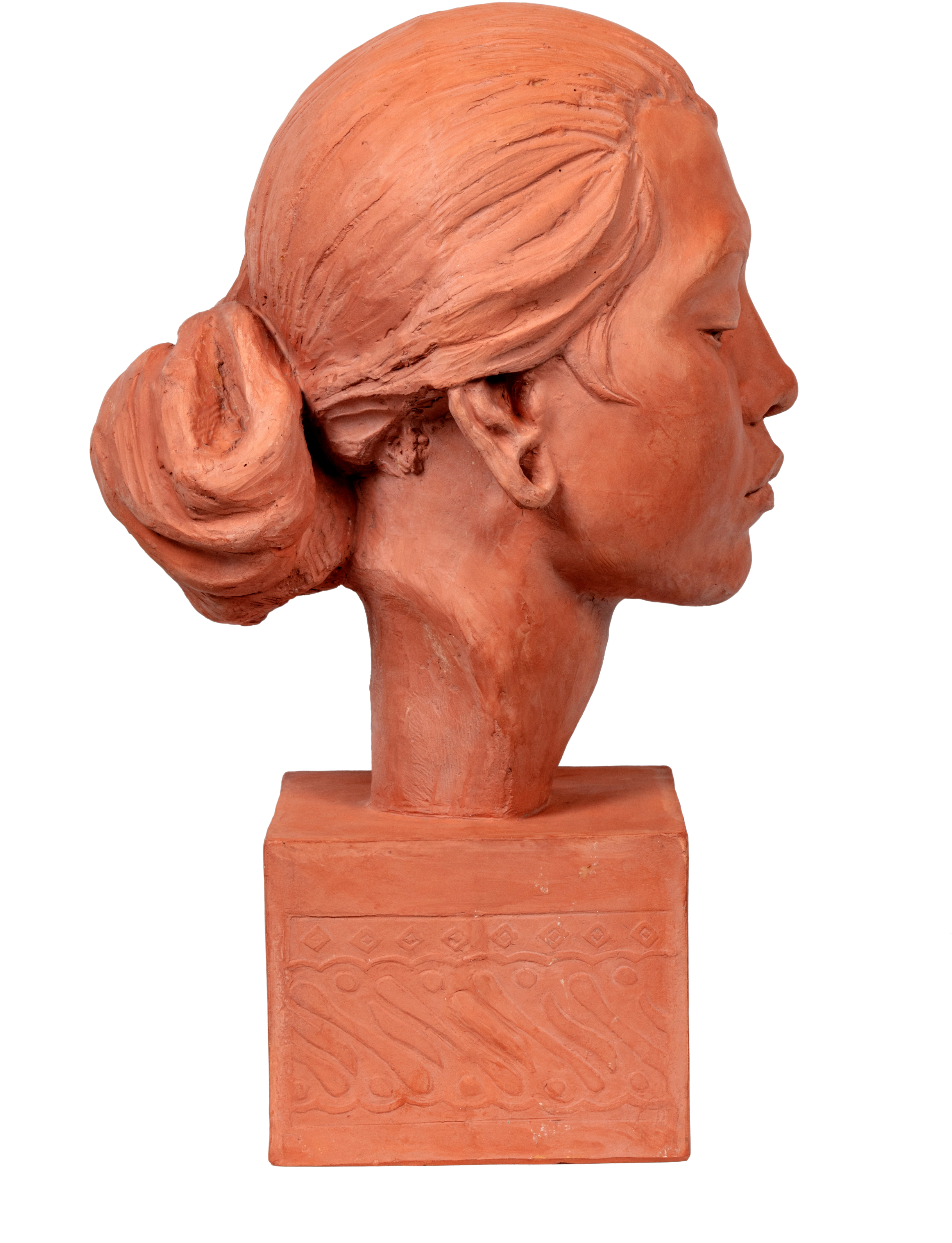
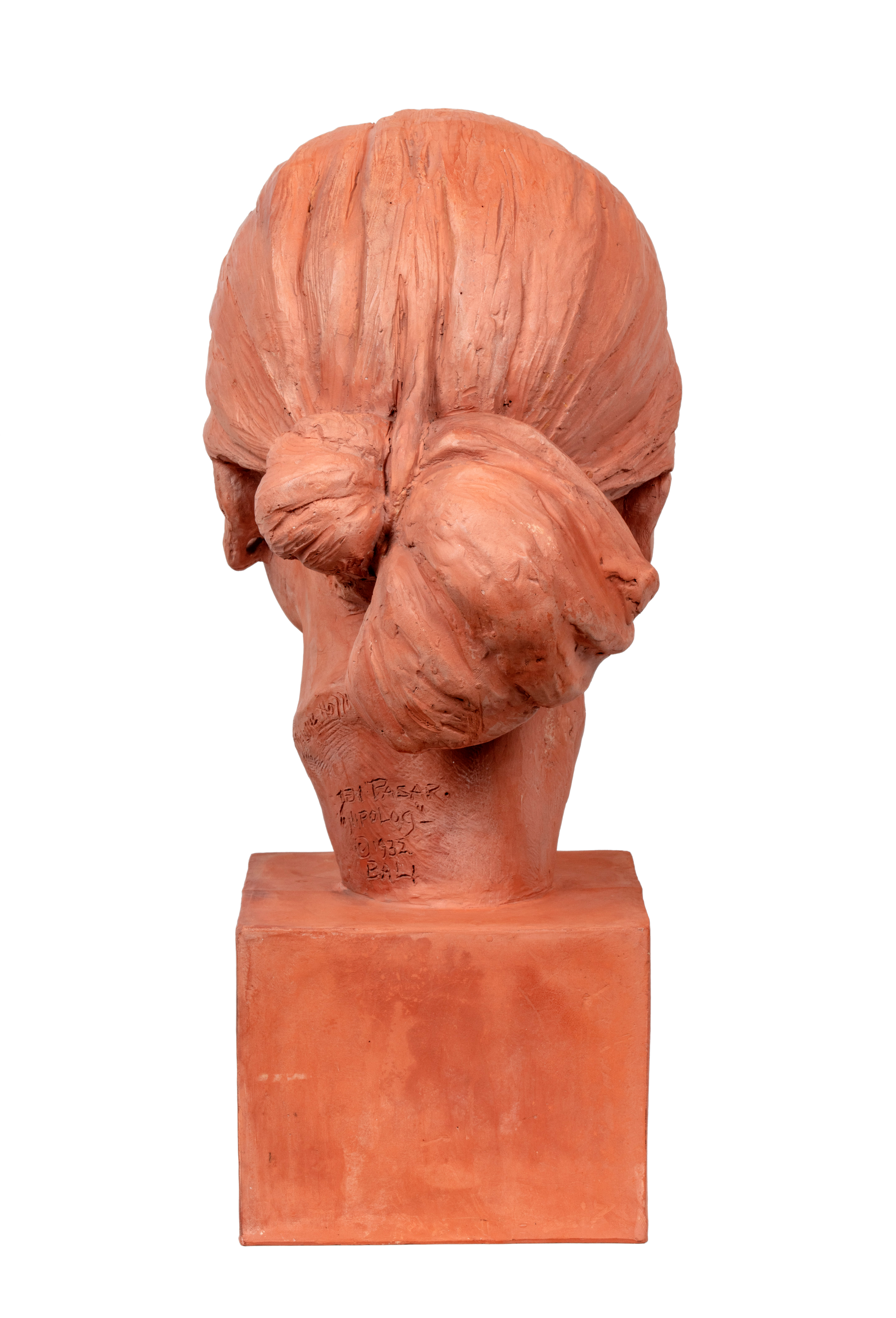
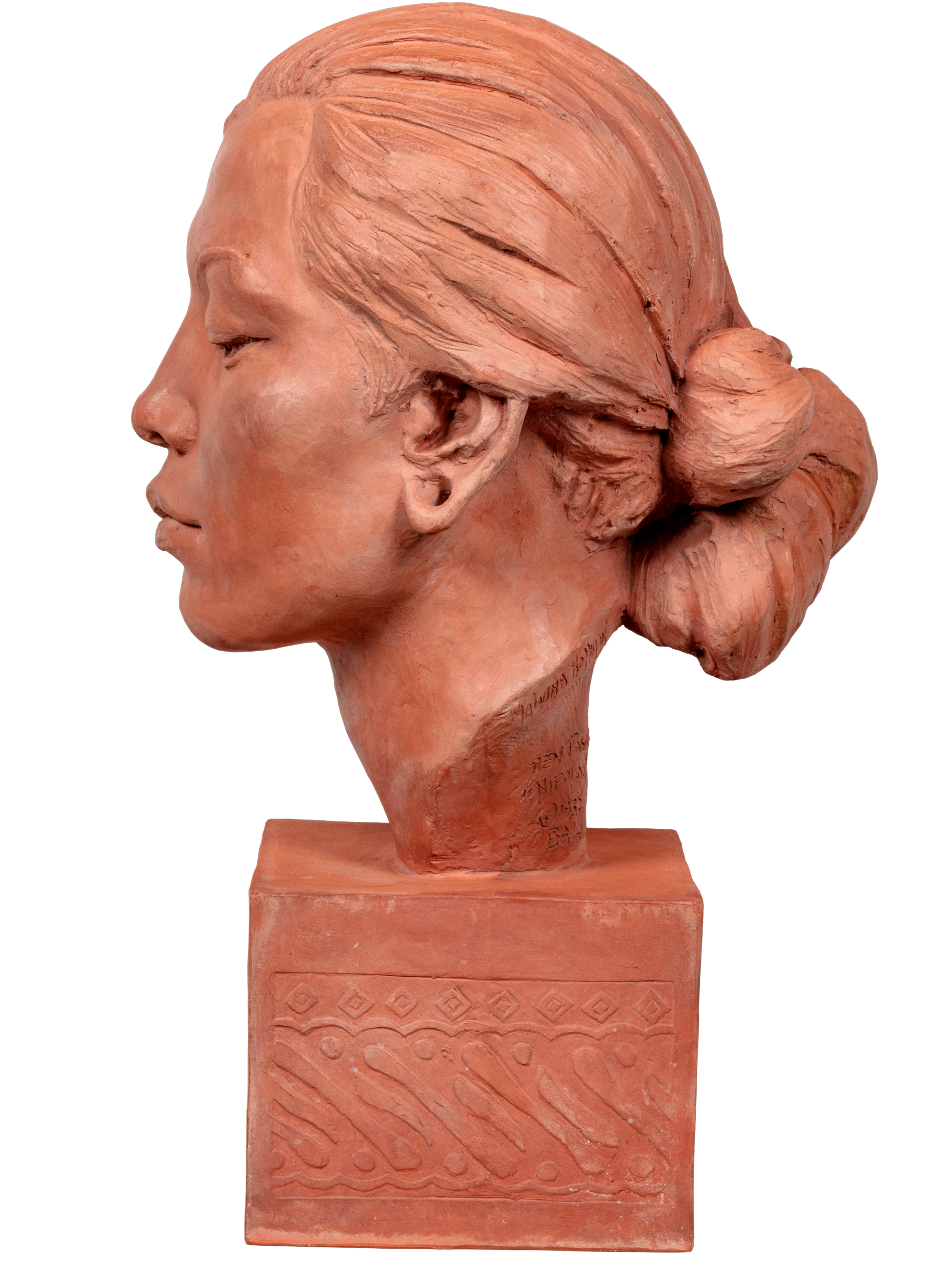
MALVINA HOFFMAN
(Brooklyn 1885 – 1966 Manhattan)
Nipolog, Bali Dancer Princess
Signed, dated, and inscribed on the verso:
Dem Pasar./ “Nipolog”-/ ©1932/ Bali
Terracotta
15 ½ x 9 ¼ x 5 ½ inches
(39.4 x 23.5 x 14 cm)
Provenance:
The artist; her estate.
Literature:
Malvina Hoffman, Heads and Tails, New York, 1936, pp. 258, 263.
Marianne Kinkel, Races of Mankind: The Sculptures of Malvina Hoffman, Urbana, 2011, pp. 70-71, fig. 3.12.
Malvina Hoffman studied with several American sculptors—George Gray Barnard, Herbert Adams, Gutzon Borglum, and Alexander Phimster Proctor—before moving with her mother to Europe. They eventually settled in Paris, where Malvina became a student of Rodin. Hoffman’s career mixed sculpture, philanthropy, and public engagement. Her most celebrated commission was for the Field Museum in Chicago—a series of over 100 sculptures for the Hall of Man. For this project Hoffman traveled extensively—modeling, photographing, and measuring her models. She would then finish and cast the works in one of her two studios, in Paris and New York, the latter located at the end of Sniffen Court off East 36th Street.
At Denpasar, the capital of Bali, Hoffman met a celebrated traditional dancer named Ni-Polog, who would become the subject of one of her most alluring works, called alternatively Bali Girl or Bali Dancer. The present terracotta, which comes from the artist’s Estate, is likely Malvina Hoffman’s original model for that work and includes an integral base decorated with a Balinese design. Photographs of Ni-Polog taken by Hoffman’s husband Samuel Grimson, who accompanied her to Bali (Fig. 2), as well as of Hoffman measuring Ni-Polog with calipers (Fig. 2), attest to both the beauty of the subject and the care with which the artist documented her features. The rudiments of a portrait in clay visible on the pedestal in the distance may in fact be the present work in its infancy. Bronze casts of our terracotta sculpture, titled and dated 1932 in Denpasar, are to be found in the Hall of Man in the Field Museum, the Cedar Rapids Museum of Art, and the Metropolitan Museum of Art.[1]
Fig. 1. Ni Polog, Field Museum, Chicago.
Fig. 2. Malvina Hoffman measuring Ni Polog, Malvina Hoffman papers, The Getty Research Institute, Los Angeles.
[1] https://www.metmuseum.org/art/collection/search/487760.


